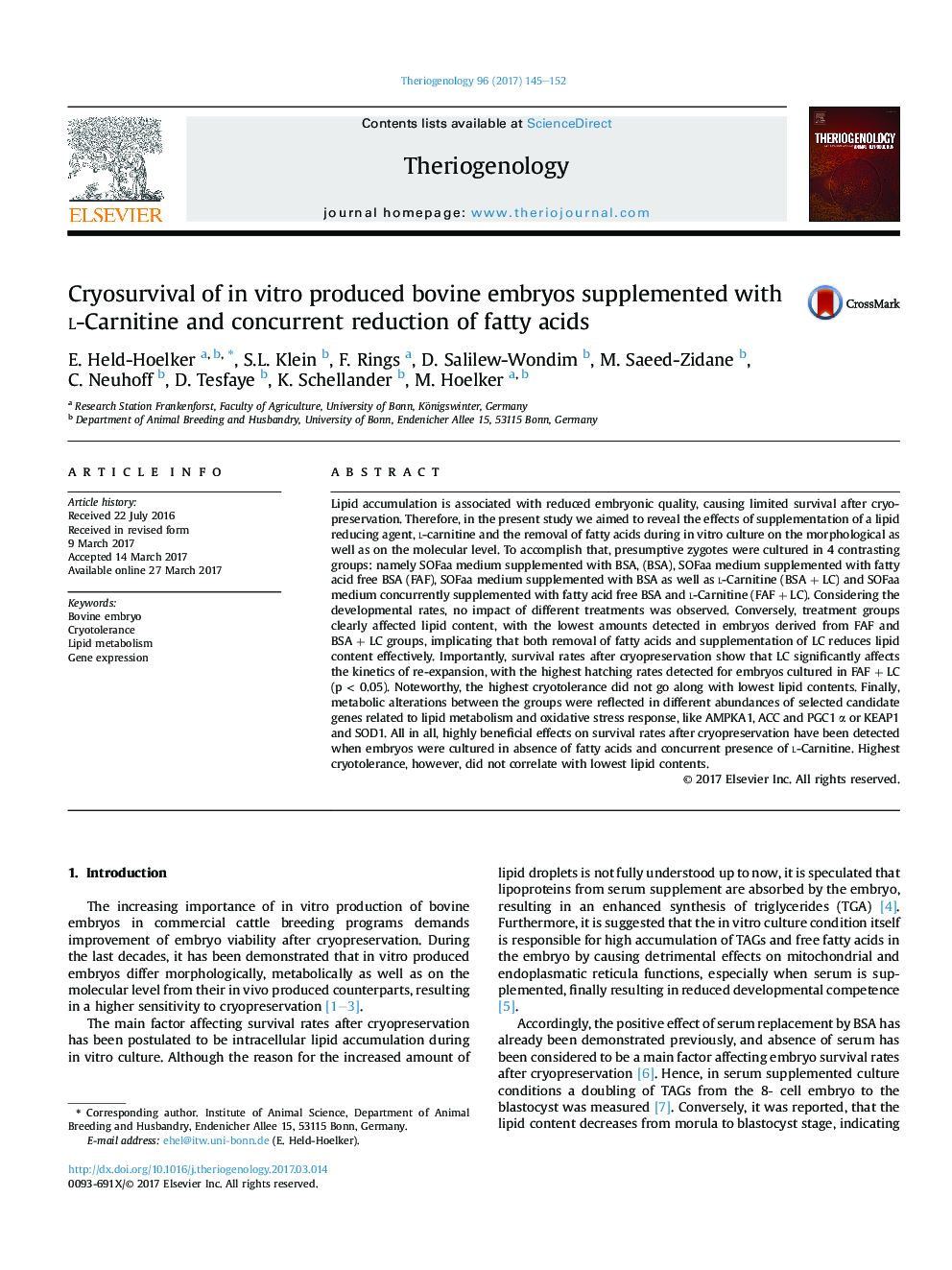| Article ID | Journal | Published Year | Pages | File Type |
|---|---|---|---|---|
| 5523205 | Theriogenology | 2017 | 8 Pages |
â¢Embryo culture was conducted with l-Carnitine supplementation and concurrent removal of fatty acids.â¢Cryosurvival and metabolism are affected by either l-Carnitine supplementation or removal of fatty acids.â¢Highest cryosurvival was obtained when both factors were applied simultaneously.
Lipid accumulation is associated with reduced embryonic quality, causing limited survival after cryopreservation. Therefore, in the present study we aimed to reveal the effects of supplementation of a lipid reducing agent, l-carnitine and the removal of fatty acids during in vitro culture on the morphological as well as on the molecular level. To accomplish that, presumptive zygotes were cultured in 4 contrasting groups: namely SOFaa medium supplemented with BSA, (BSA), SOFaa medium supplemented with fatty acid free BSA (FAF), SOFaa medium supplemented with BSA as well as l-Carnitine (BSA + LC) and SOFaa medium concurrently supplemented with fatty acid free BSA and l-Carnitine (FAF + LC). Considering the developmental rates, no impact of different treatments was observed. Conversely, treatment groups clearly affected lipid content, with the lowest amounts detected in embryos derived from FAF and BSA + LC groups, implicating that both removal of fatty acids and supplementation of LC reduces lipid content effectively. Importantly, survival rates after cryopreservation show that LC significantly affects the kinetics of re-expansion, with the highest hatching rates detected for embryos cultured in FAF + LC (p < 0.05). Noteworthy, the highest cryotolerance did not go along with lowest lipid contents. Finally, metabolic alterations between the groups were reflected in different abundances of selected candidate genes related to lipid metabolism and oxidative stress response, like AMPKA1, ACC and PGC1 α or KEAP1 and SOD1. All in all, highly beneficial effects on survival rates after cryopreservation have been detected when embryos were cultured in absence of fatty acids and concurrent presence of l-Carnitine. Highest cryotolerance, however, did not correlate with lowest lipid contents.
